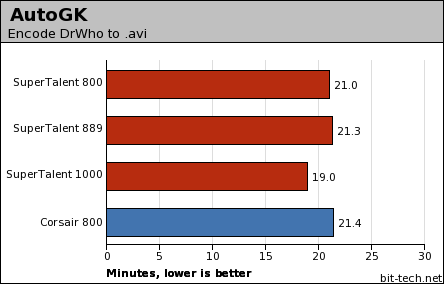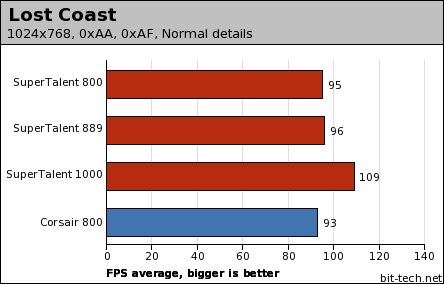
Results




Overclocking
We had a play, but we weren't able to get the memory to clock up to 1067MHz, even with a little extra voltage. The memory is rated to 1000MHz, and doesn't appear to want to go any further. It's possible to tighten the timings a little if you want the memory to stay at 800MHz, but you'll get more mileage out of extra speed if your processor can take it. The overclock you can get will also be very reliant on the individual modules.Conclusions
The SuperTalent memory is clearly pretty nippy. It does exactly what it says on the tin, getting to 1GHz with the appropriate timings. This is the first kit we've seen to operate at this size and speed, although we understand that OCZ are soon to be shipping 1GHz modules (PC8000) and Corsair are already shipping the first modules rated at 1066MHz (PC8500), which is even faster. If you want 2GB of RAM in two sticks, these are really your only options - although as our real-world benchmarks show, the difference between standard speeds is probably minimal unless you're going to do some decent CPU overclocking.
MSI MPG Velox 100R Chassis Review
October 14 2021 | 15:04







Want to comment? Please log in.